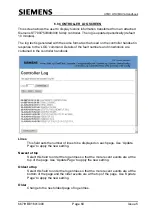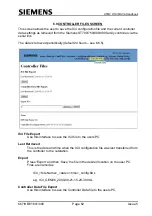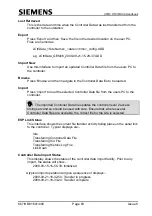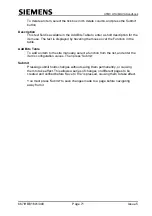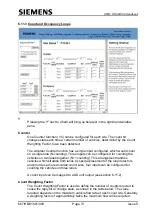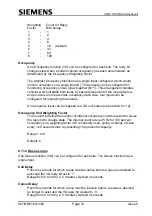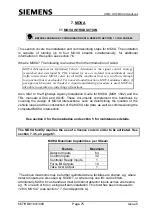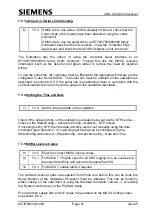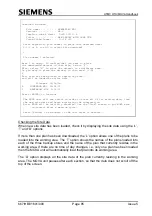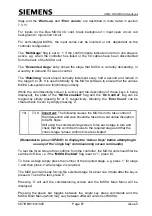
UTMC OTU/MOVA Handbook
667/HB/31601/000
Page 74
Issue 5
Weighting
Count for Reply
Factor
Bit Change
1
- 1
2
- 2
3
- 4
4
- 8
5
-
16
(default)
6
- 32
7
- 64
8
- 128
Occupancy
One Occupancy function (VO) can be configured for each site. The reply bit
changes state when a certain vehicle occupancy has been accumulated, as
determined by the Occupancy Weighting Factor.
The simplest Occupancy function has a single input configured, which would
monitor occupancy on a single lane (N). Three inputs can be configured for
monitoring occupancy on two lanes together (N+1). This arrangement handles
vehicles which straddle both lanes by special placement of the loop detectors
and provides a more accurate occupancy data. Also, four inputs can be
configured for monitoring three lanes.
An occupancy input can be mapped to a UD unit output (see section 6.11.2).
Occupancy Unit Weighting Factor
This is used to define the number of internal occupancy counts required to cause
the reply bit to change state. The internal count rate is 25 Hz for 100 percent
occupancy so a weighting factor of 6 is normally used, giving a change of state
every 1.28 seconds max, representing 100 percent occupancy.
Range 1 to 8.
Default: 6
6.11.4 Queue Loops
One Queue function (VQ) can be configured for each site. The Queue function has a
single input.
Call Delay
Period in seconds for which a loop must be active before a queue is deemed to
exist and the VQ reply bit set to ‘1’.
Range from 0 to 300 (i.e. 5 minutes). Default 3 seconds.
Cancel Delay
Period in seconds for which a loop must be inactive before a queue is deemed
no longer to exist and the VQ reply bit cleared to ‘0’.
Range from 0 to 300 (i.e. 5 minutes). Default 3 seconds.

